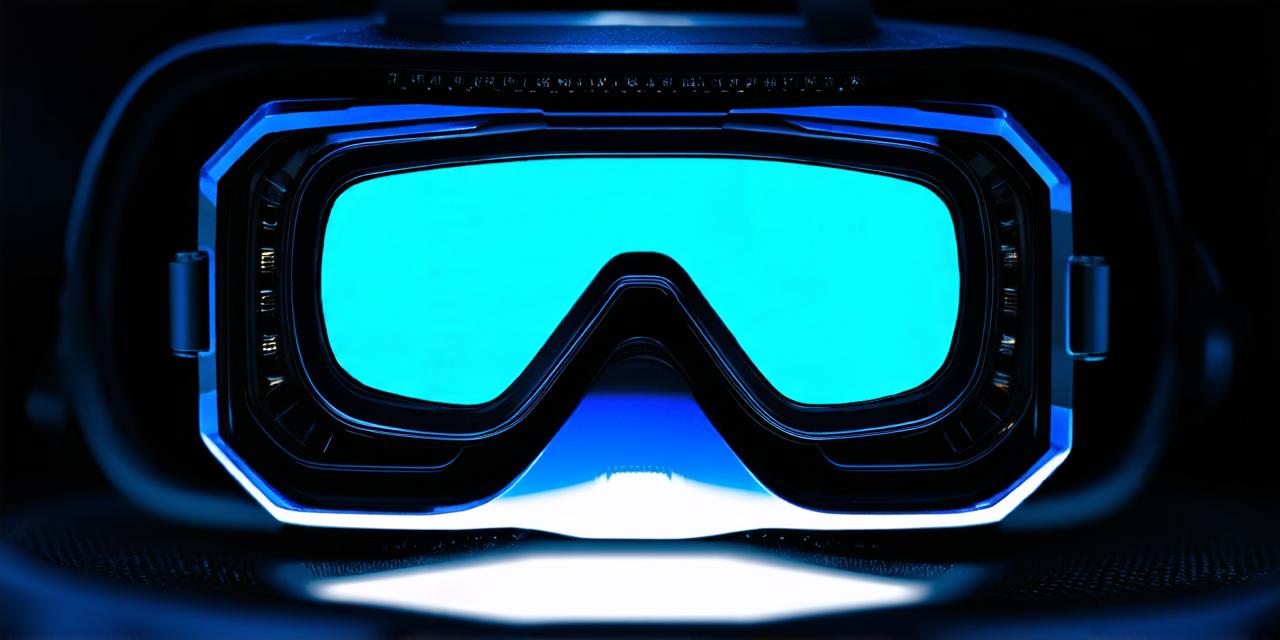The Rise of Virtual Reality and Its Impact on Our Perception of Reality: A Study on Unreal Engine Developers
Virtual reality (VR) technology is rapidly transforming the way we perceive and interact with the world around us. As developers of VR applications, it’s important to understand how this technology impacts our perception of reality and how it can be used to enhance user experiences in a variety of industries.
Introduction: The Science Behind Virtual Reality
Virtual reality technology involves immersing users in a simulated environment that feels as if it is real. This is achieved through the use of specialized headsets or displays that track a user’s movements and provide visual, auditory, and sometimes haptic feedback to create a sense of presence and interaction with the virtual world.
The science behind VR technology relies on several key principles of human cognition and perception. One of the most important is the concept of embodiment, which refers to the fact that our brains process information about ourselves and our environment in terms of our own physical body. When we wear a VR headset or display, our brain receives sensory input that is similar to what it would receive if we were actually experiencing the virtual world, leading us to feel as though we are truly present within the simulation.
Another important principle is the concept of spatial perception, which refers to the way our brains process and organize information about the physical environment around us. In VR, this sense of space is manipulated through the use of 3D graphics and soundscapes that simulate a realistic environment. By providing users with a sense of spatial presence, VR can be used to enhance learning, training, and entertainment experiences in a variety of contexts.
Real-Life Examples of Virtual Reality Applications
Virtual reality technology is already being used in a wide range of industries to create immersive and engaging experiences for users. Some examples include:
-
Gaming and Entertainment: One of the most well-known applications of VR technology is in gaming and entertainment. With VR headsets or displays, users can enter a virtual world and interact with characters and objects within that world in ways that were previously impossible.
-
Training and Education: Virtual reality technology is also being used to enhance training and education experiences for a variety of professions. For example, medical students can use VR simulations to practice surgeries and other procedures in a safe and controlled environment, while pilots can use VR simulations to train for real-world flight scenarios.
-
Tourism and Hospitality: Virtual reality technology is being used to create immersive travel experiences that allow users to explore destinations around the world without ever leaving their homes. This has particular appeal for people who are unable to travel due to financial or logistical constraints, as well as for those who want to experience a destination in a more intimate and personal way.
-
Mental Health: Virtual reality technology is also being used in mental health treatment, particularly for conditions such as anxiety, depression, and PTSD. By creating simulations of triggering environments or situations, therapists can help patients confront and process their fears and emotions in a safe and controlled environment.
Potential Implications for the Future of VR Technology
The potential implications of virtual reality technology for the future are vast and varied. Some possible applications include:
-
Remote Collaboration: Virtual reality technology could be used to create immersive and interactive remote collaboration experiences, allowing teams to work together in a more efficient and effective way regardless of geographic location.
-
Telemedicine: VR technology could also be used to enhance telemedicine services by providing patients with immersive and realistic experiences that simulate in-person consultations and treatments.
-
Workplace Training: Virtual reality technology could be used to create more engaging and effective workplace training programs, allowing employees to learn new skills and procedures in a safe and controlled environment.
-
Mental Health Therapy: As mentioned earlier, VR technology has the potential to revolutionize mental health treatment by providing patients with immersive and realistic simulations of triggering environments or situations.
Conclusion: The Future of Virtual Reality Technology
The rise of virtual reality technology represents a fascinating and exciting development in the field of human cognition and perception. As developers, it’s important to understand how this technology works and how it can be used to enhance user experiences and improve productivity, learning, and mental health outcomes. By exploring real-life examples and potential implications for the future, we can begin to see the vast potential of VR technology and its role in shaping our perceptions of reality.
FAQs
1. What is virtual reality (VR) technology?
Virtual reality (VR) technology involves immersing users in a simulated environment that feels as if it is real. This is achieved through the use of specialized headsets or displays that track a user’s movements and provide visual, auditory, and sometimes haptic feedback to create a sense of presence and interaction with the virtual world.
2. How does virtual reality technology impact human cognition and perception?
The science behind VR technology relies on several key principles of human cognition and perception, including embodiment and spatial perception. By providing users with a sense of presence and interaction within the virtual world, VR can enhance learning, training, and entertainment experiences in a variety of contexts.
3. What are some real-life examples of virtual reality applications?
Virtual reality technology is already being used in gaming and entertainment, training and education, tourism and hospitality, mental health treatment, remote collaboration, telemedicine, and workplace training.
4. What are the potential implications for the future of virtual reality technology?
The potential implications of VR technology for the future are vast and varied, including remote collaboration, telemedicine, workplace training, and mental health therapy.
5.
